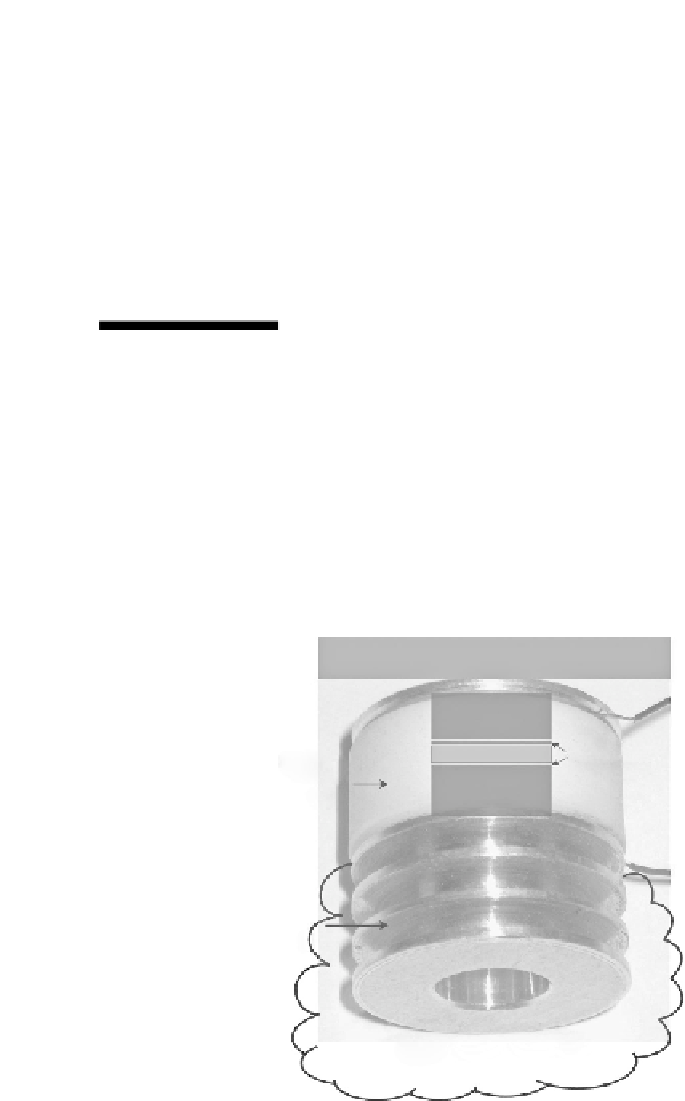Environmental Engineering Reference
In-Depth Information
transferring energy to the time-varying load resistance, which consists of an
energy storage element and a wireless sensor node.
The rest of the chapter is organized as follows: Section 3.1 describes the
TEH system and energy conversion effect. Section 3.2 discusses the resis-
tor emulation-based maximum power point (MPP) tracker for TEH; Section
3.3 describes its implementation using a DC-DC (direct-current-to-direct-
current) buck converter. The experimental results of the optimized TEH wire-
less sensor node prototype are discussed in Section 3.4, followed by a sum-
mary of the TEH research work in Section 3.5.
3.1 Thermal Energy Harvester
The thermal energy harvester employed in this chapter for converting ther-
mal energy into electrical energy is shown in
Figure 3.1
. The thermal energy
harvester is designed for two main purposes: (1) to house the miniaturized
thermoelectric generator for ease of deployment and (2) to channel the ther-
mal energy, generated from the heat source at a certain high temperature of
T
H
,tothe enclosed TEG via a thin film of thermally and electrically conductive
silver grease between them and then release the residual heat accumulated
in the heat sink to the surrounded ambient air at a lower temperature
T
C
.
Heat Sources,
T
H
-
Silver
Grease
TEG
Teflon
Material
+
Heat Sink
Environment,
T
c
FIGURE 3.1
A thermal energy harvester consisting of a housing structure and a TEG.









Search WWH ::

Custom Search